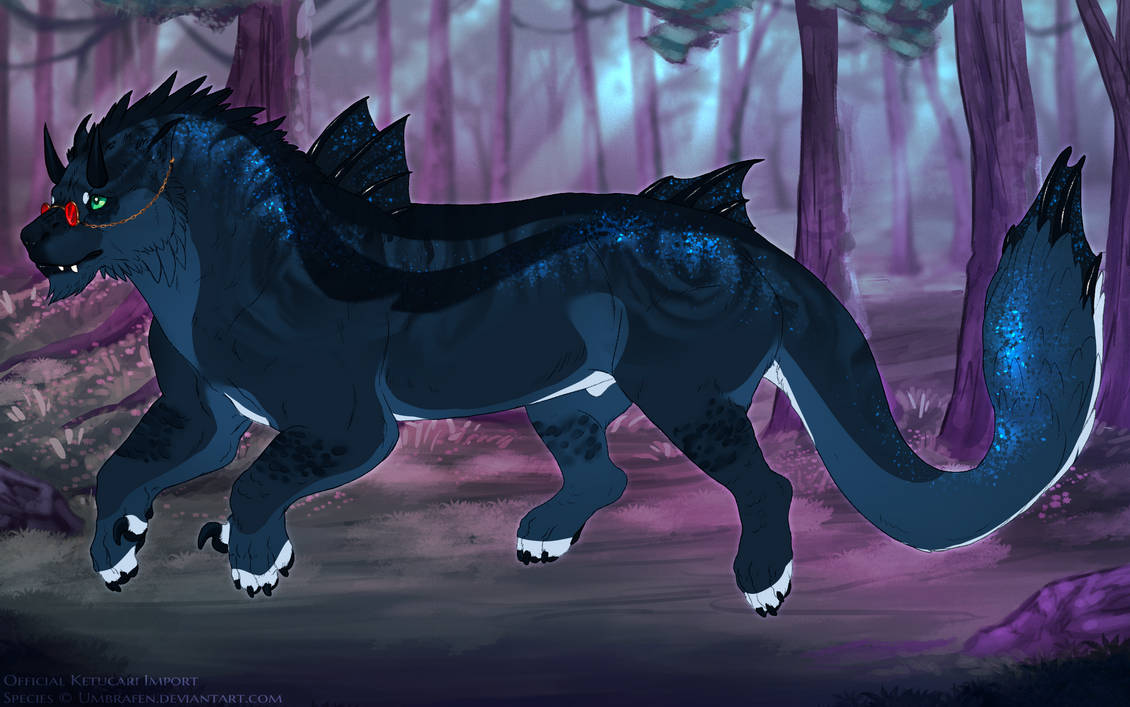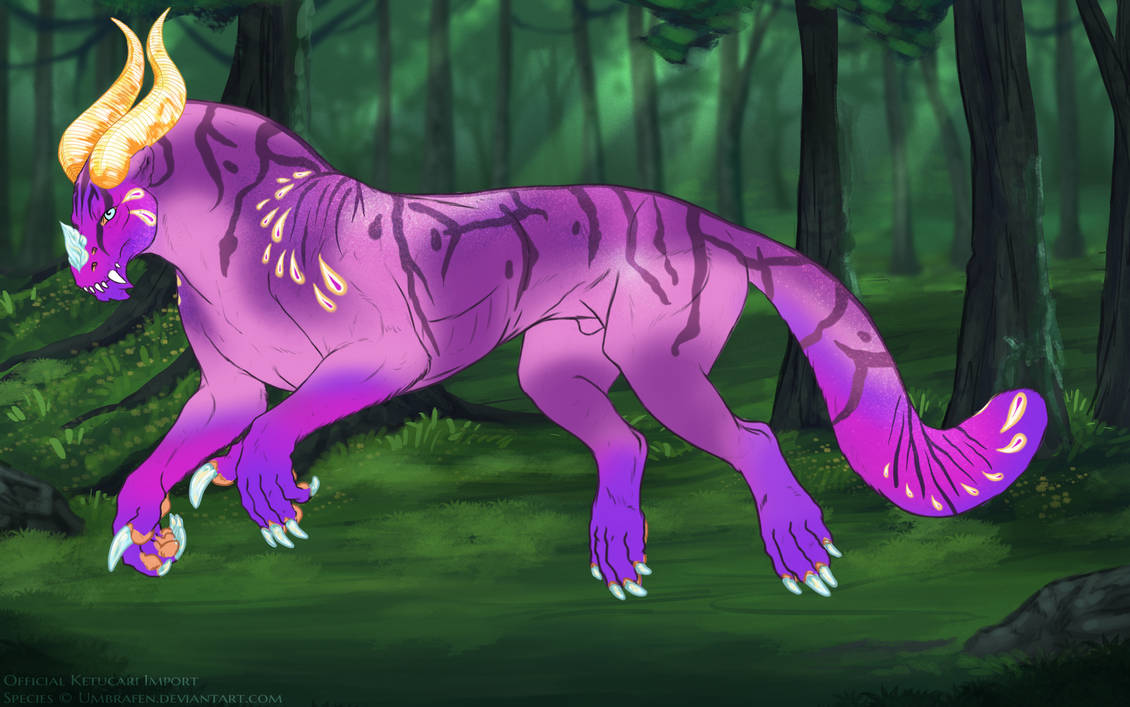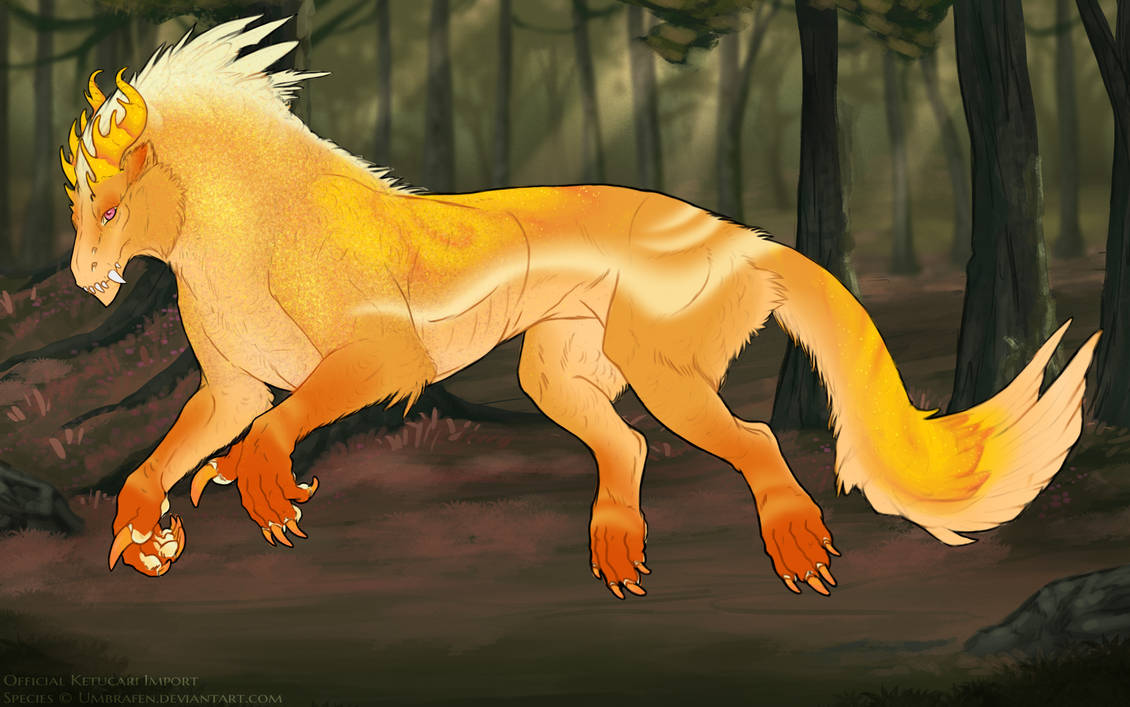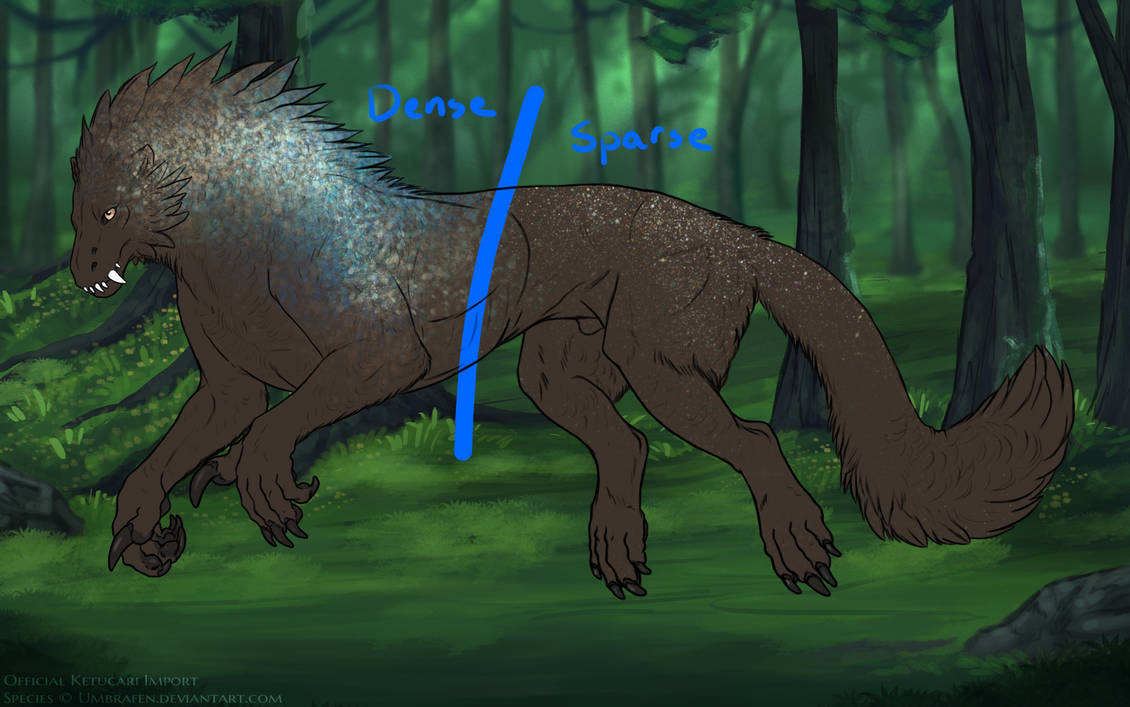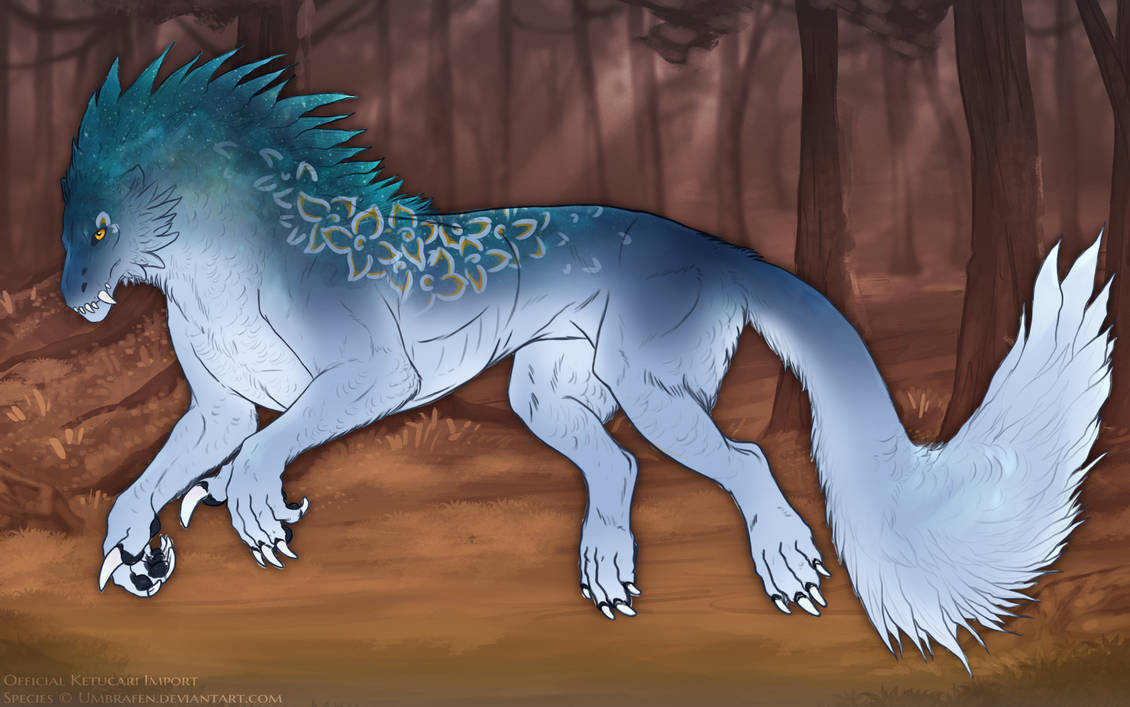Luster
Examples
Basics
- Luster either presents as an amorphous swath of glitter, or modifies one marking on the ketucari to glitter, similar to having been brushed with luster dust or mica powder.
- Luster presents as shimmer-like overlay over the ketucari, and even when dense should look like your ketucari is wearing body glitter
- In your ketucari’s genotype, luster is represented by “nLus” (heterozygous) or “LusLus” (homozygous)
- In its heterozygous form, luster has a passrate of 25%. Homozygous luster has a passrate of 50%.
Color and Shape
Luster does not modify the base coat or marking colors, but applies a shimmering overlay to the area or marking it affects. This can either be dense, resembling a sheet of holographic glitter paper, or sparse, resembling body glitter.
When dense, Luster should look like your ketucari is covered in iridescent sequences, and fade smoothly into the base-coat, no matter the color of the glitter itself.
Creature, the ketucari above, has a very dense luster (and vapor), but you can clearly see the base-coat underneath, and the edges fade out smoothly. The luster is darker and less shimmery where the light is not hitting the ketucari, but bright and vibrant where the light is hitting her.
Holmes has a good midway point between sparse and dense luster, with a soft fill providing a base sheen, and dark and light glitter on top. All of this follows where the ketucari would be hit by the direct top-down light implied by this particular luster.
Wolfhard here has sparce and thin luster, creating a subtle highlight along their back that is brightest where the light from the top left courner would be striking them, and almost imperceptible where the shadows hit.
The examples below are of Luster-look-alikes, presented to explain what Luster should NOT look like.
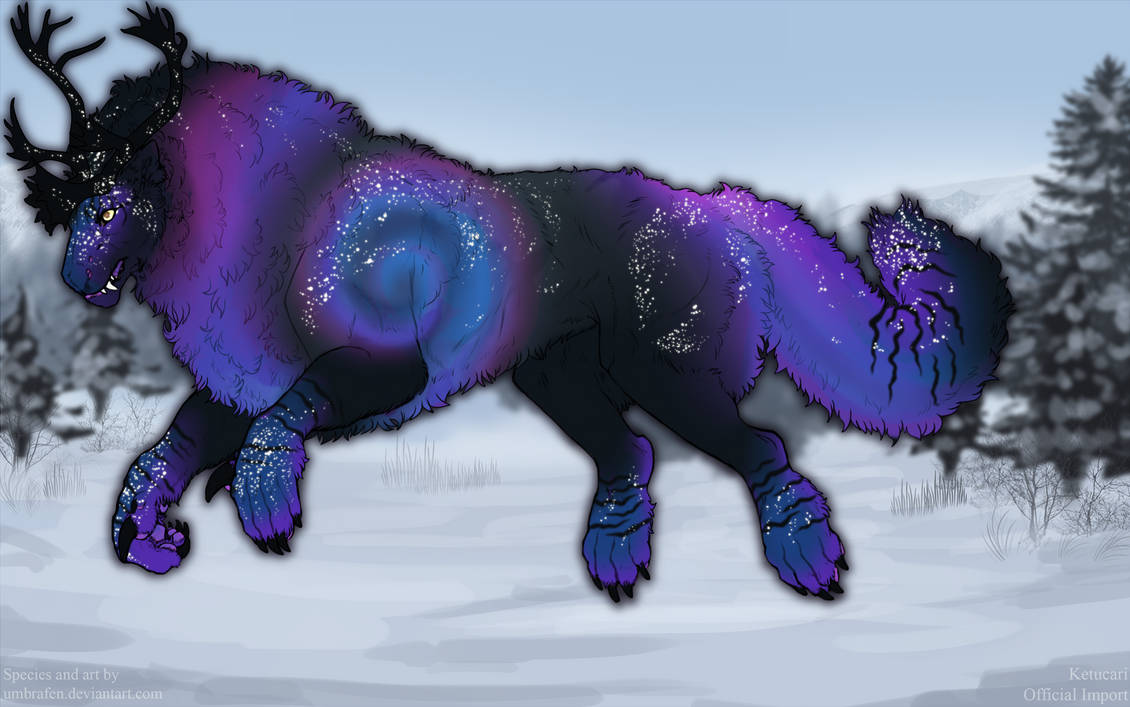
This ketucari has radiance restricted to mottling-- note that radiance glows with its own light and is bright regardless of light direction, while luster should be brightest under direct light and fainter in the shadows, similar to shimmer or glass.
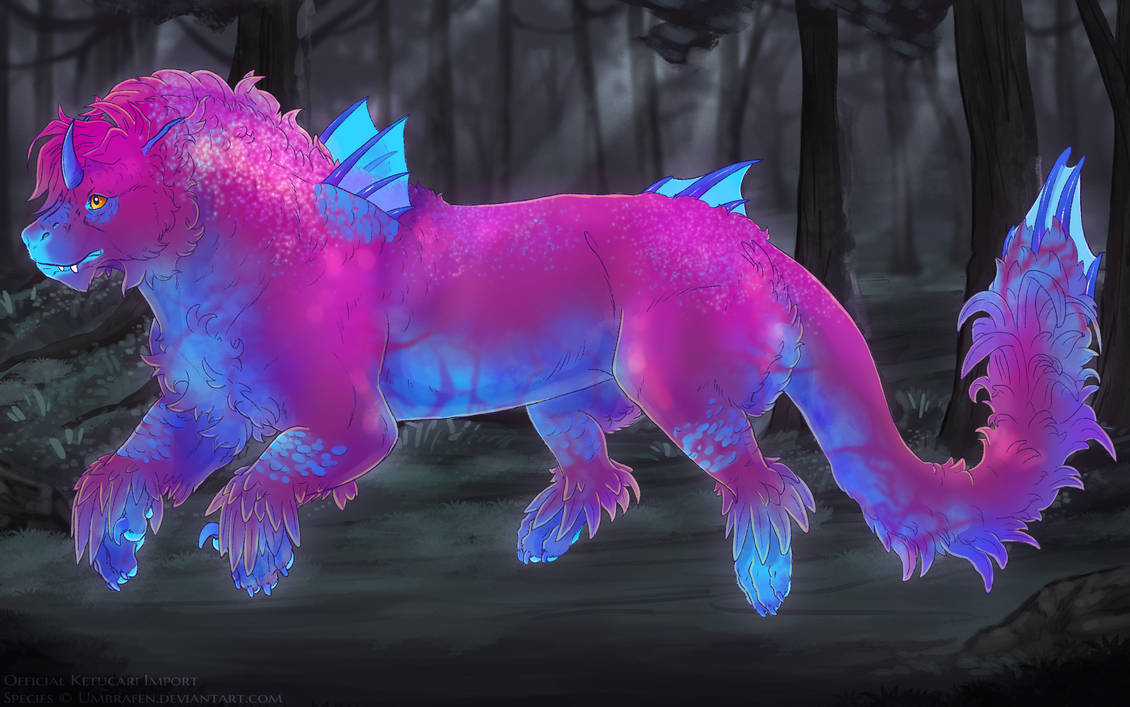
This ketucari also has radiance restricted to mottling-- however, radiance is additionally affected by colorize to use color shifts that more closely approximate Luster's effect. However, there are still a few differences: her radiance still glows strongly in areas that are shadowed by her shimmer, and has a fairly even glow across the whole marking. Additionally, while the marking shifts in color, it is consistent in its color shifts across areas-- luster spots adjacent to each other may use different hues and intensities to suggest that they are reflecting light at different angles.
Luster can be any color, and multiple hues (particularly if going for a more holographic glitter effect)-- however, it should not completely obscure the color of the marking or base coat it is covering even if using a dense option.
The following two kets have vapor that could be mistaken for Luster but would not pass as Luster
Gold Dust was designed to look like she was painted with mica powder, with vapor, vapor's sparkles, and mottling, however she would not pass as luster, because the color obscures the base coat underneath, nor obey light direction and contours.
Sunnifa here has a very sparkly vapor that similarly looks sprinkled with glitter and is being used to enhance the base coat underneath, however because it's still a solid, if cloudy, block of color, it could not pass as luster. While Sunnifa's vapor does follow light direction for its highlights, it is still a solid block of color.
Some of the tutorials linked below can help with obtaining the desired effect! Please note that these are external links to resources not supported by ketucari.com.
Glitter tutorial by CosmosKitty@ArtStation
(shows sparse with walkthrough steps, and dense with only step by step)
(covers sparse but can be applied to dense)
Krita users can find a brush set here for free download designed by pawstepsinthesnow that may be used to help with creating a glitter texture, but is not required:
[External Link, hosted on Google Drive]
Range
Luster may appear on any part of the body. It must not cover more than 50% of the body, but must cover enough that it is immediately recognizable.
Interaction with Other Markings
- Below is a list of markings that you can restrict luster to if the ketucari has both genes. You may only choose one gene to restrict luster to. This is simply a design option and is not a requirement.
Ray (and wave)
Strand (and tail rings)
Webbing (Dark)
- Jovian and Luster can affect the same marking, leading to a swirling cloudy look such as what is produced by mixing luster dust into a drink. The distinct swirls and shapes of Jovian can be much more amorphous and abstract if this option is taken. Jovian can also affect Luster itself, following Luster's standard shape rules. Unrestricted Luster with restricted Jovian is displayed on Baker, below.

Accents
- Luster can have a gradient and fade into the base coat.
- Luster can optionally affect any area that is governed by nail and skin rules as long as it shows somewhere on the body.
